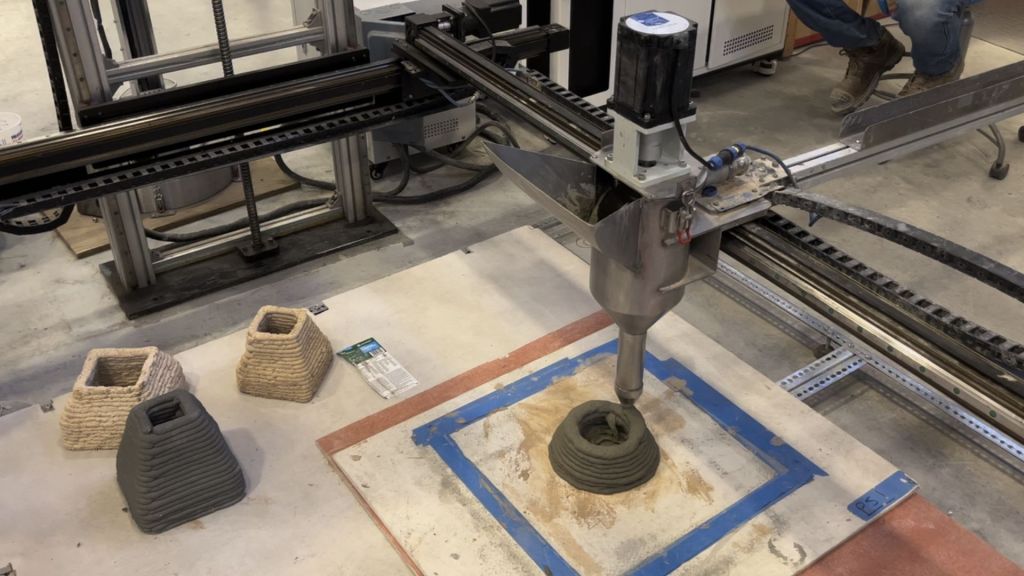Researchers at the University of New Mexico (UNM) have reached a major milestone in construction innovation by patenting a flexible concrete material designed for 3D printing.
Equipped with a 3D concrete printer and advanced measurement tools, the Gerald May Department of Civil, Construction, and Environmental Engineering team is tackling long-standing challenges in construction and infrastructure maintenance.
The new material, a self-reinforced, ultra-ductile cement material, could pave the way for safer, more resilient buildings and bridges while significantly reducing the need for frequent repairs.
Rethinking traditional building
Traditional construction methods often require heavy machinery and manual labor to position steel or wooden beams, a process that is not only costly but also dangerous. Maryam Hojati, an assistant professor at UNM, is leading the effort to automate and innovate this process through 3D printing.
Although concrete is highly compressed, it is notoriously brittle when in tension. This characteristic leads to frequent cracks and constant maintenance, be it on sidewalks, buildings or bridges. “Concrete itself has no tensile properties. So if you pull apart a piece of concrete, it can easily break. It’s a very brittle material,” Hojati explained.
Natural disasters such as earthquakes and strong winds compound the problem. These forces place tension on structures and further expose concrete's weaknesses. “The material should hold and resist both tension and compression. Concrete is great for compression, but when it comes to tension, it is a weak material,” she added.
Researchers worldwide are working to address these issues, but existing 3D printing techniques still rely on traditional reinforcements such as beams or rebar, limiting the full automation potential of 3D printing.
The Science Behind Bendable Concrete
UNM researchers have developed a solution that eliminates these limitations. PhD Graduate Muhammad Saeed Zafar has created a blend of materials that is both strong and flexible. “When we talk about 3D printing or additive manufacturing in metals and plastics, it is at a very advanced stage, but concrete printing is still developing,” Zafar noted.
The new substance contains a high concentration of polymer fibers, providing tensile strength and flexibility. “Due to the incorporation of large amounts of short polymer fibers into this material, it could hold the entire concrete together when subjected to a bending or tensile load,” Hojati said.
The patented material, developed in collaboration with Zafar and researcher Amir Bakhshi, offers four different blends with up to 11.9% higher stretch capacities than conventional materials. This mixture maintains the necessary viscosity for smooth 3D printing without clogging the nozzle.
Achieving this balance was no easy task. The tests included printing small structures such as prisms and dog bones, followed by rigorous evaluation of bending and tensile strength. Various materials were tested, including polyvinyl alcohol, silica fume, fly ash and ultra-high molecular weight polyethylene fibers.
“The main purpose of this work was to address the problem of reinforcement in 3D concrete printing,” Zafar explained. “We claim that 3D concrete printing is an automated process. However, traditional reinforcement methods compromise automation in this process.”
Paving the way for the future
The impact of this breakthrough extends far beyond Earth. Space agencies like NASA are exploring 3D printing as a solution to building habitats on other planets. Transporting heavy steel beams and large workforces into space is impractical, making innovative materials like UNM's pliable concrete a potential game-changer.
Closer to home, this technology could transform the construction industry by enabling structures that are more resilient to natural disasters and require less frequent maintenance. It also encourages greater automation and reduces the costs and risks associated with traditional construction methods.
“This was very successful research. This material has 3D printing properties and very high structural viability that could be used in the construction industry,” said Hojati.
